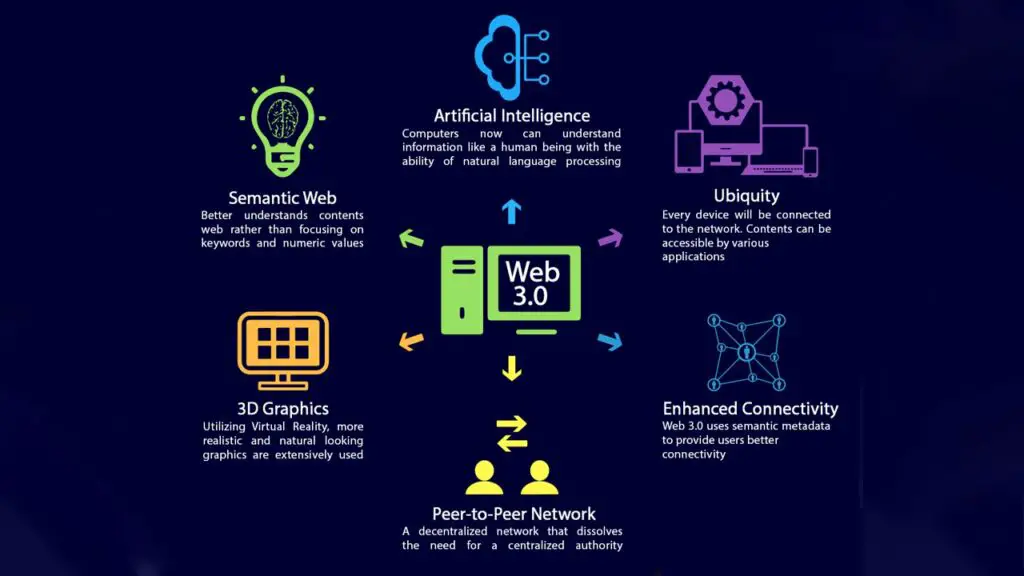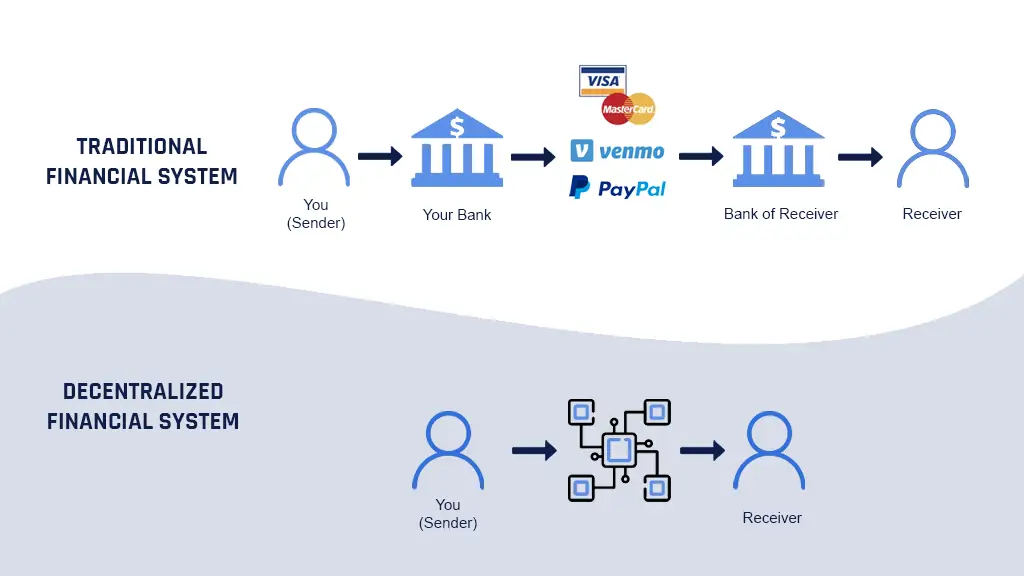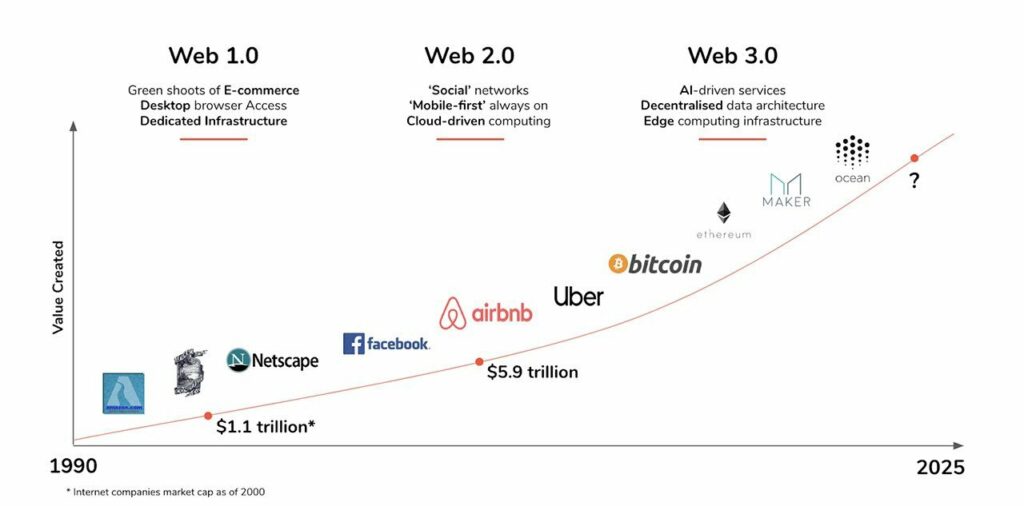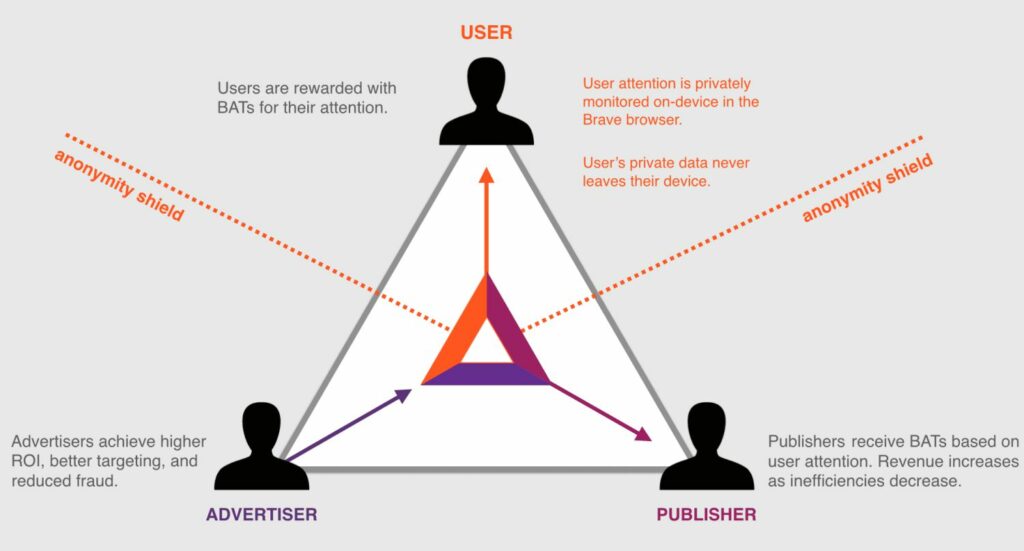The world is gradually moving onto the next version of the web- Web 3.0. It describes the third generation of internet services that run on the blockchain. So, what exactly is Web 3? How different is it from the current Web 2? What are its advantages, disadvantages, and how will it affect you? Let’s look at answers to all these questions in our simplified newbie’s guide to Web 3.0.
Related | What is IPFS? Add IPFS Support to Chrome, Brave, and Firefox
What is Web 3.0?
- Web 3.0 is decentralized, similar to Bitcoin
- The data is held on P2P network- no single party controls it
- Decentralization avoids single point of failure, eradicating downtimes

For starters, Web 3.0 is a new age iteration of internet services based on decentralized blockchains. It means that the data on Web 3.0 is not held by a single party– instead, it’s on the public blockchain, controlled by the users in the network.
Web 3 is a peer-to-peer internet with no single authority. You’re the owner of the content you post online with full control over it. And since the data is stored on multiple computers, there is no need to worry about the downtimes. The data can be accessed from any device, anywhere.
Web 3.0 is also more private. Your digital identity need not necessarily match your real identity. You can read articles, download stuff, and make purchases without revealing who you exactly are.
AI, Semantic Web, and 3D Graphics
Web 3.0 has Artificial Intelligence (AI) and Semantic Web as its key pillars. With semantics, computers would understand the meaning or context behind the information and not just read the keywords. AI and machine learning will further use that data to solve our problems.
This, coupled with edge computing, would allow the computers to create or share content by analyzing the meaning of words like humans. This will result in a faster and more personalized web experience.
For instance, what if computers could know your intent behind the search? What if it could learn what you’re interested in and help find what you want? Sounds interesting, right?

Besides, 3D designs and graphics are also being extensively used in websites and services on Web 3. This involves museum guides, e-commerce galleries, and games based on synthetic reality- a potential example would be Cyberpunk 2077.
You can call Web 3.0 an era of three-dimensional internet wherein virtual avatars, virtual reality (VR), and augmented reality (AR) would be very common.
dApps and Defi in Web 3.0
Having decentralization at its core, Web 3.0 integrates both decentralized apps (dApps) and decentralized finance (Defi). dApps are digital apps or programs that run on a blockchain or peer-to-peer network. It can be a game, social media, or any other app.

On the other hand, Defi refers to financial services on public blockchain networks. It caters to all and does not rely on intermediaries like banks, exchanges, or brokers. Instead, it uses smart contracts, i.e., self-executing programs based on legalities.
Defi components include cryptocurrencies, tokens, assets, crypto exchanges, and more. Web 3.0 encompassing crypto opens dozens of possibilities like people paying for stuff on the web directly from the crypto wallet, advertisers paying tokens for ads, and more.
For instance, crypto wallets like MetaMask can integrate with Web 3 applications to facilitate anonymous and secure international payments and transactions.
The Cost Factor in Web 3.0
Unlike Web 2.0, you’re no longer the product in Web 3.0. As of yet, we’re looking forward to a model where the advertiser will not only pay the creator but even the user will be rewarded for viewing the ad.
However, since the users on the network would bear the data handling, and related cost, the ones who are not a part of it may have to pay in some or another form- say, you earn tokens for watching ads, and you spend them back for accessing a particular content or service.
Evolution of Web- Web 1.0 vs Web 2.0 vs Web 3.0

Web 1.0- World Wide Web Begins
- The static web- information is served from website to the user
Web 1.0 refers to the initial stage of the internet, ranging from 1989- 2005. It mostly involved static web pages that provided limited information and interaction– more like you take a book or magazine and upload its pages on the internet.
It was a read-only web with information moving from the website to the user. There were no algorithms, advertisements, or social media.
Web 2.0- The Social Web
- Dynamic and interactive- users can interact with the website
Starting 2005, Web 2.0 is the web we use currently. You can call it read-write or social web, thanks to social media and dynamic HTML that made it programmable, more interactive, and engaging.
Web 2.0 became a hub for creating content, online businesses, and entertainment. It involves interaction between users and websites and cross-interaction of users. For example- YouTube, Facebook, and Twitter.
Unfortunately, Web 2.0 isn’t free- central authorities verify your identity, authorize transfers and transactions, and control what you publish online. Also, despite data protection laws like EU’s GDPR, there’s a huge skepticism around the storage and privacy of data by controlling entities.
Web 3.0- The Decentralised Web

- Decentralized and privacy- open, trustless, permissionless with edge computing
Web 3.0 is the next stage in the evolution of the internet. It is referred to as a Semantic web that involves read-write and execution.
Web 3 is driven by three layers of technologies- decentralized data networks, edge computing, and artificial intelligence coupled with machine learning algorithms. It enables computers to interact with and create data.
Web3 is permissionless, trustless, and self-governing. It does not require control from a central authority to manage your data. This also makes it more privacy-oriented, unlike Web 2.
Advantages & Disadvantages of Web3
Advantages of Web 3.0
- End users will have complete ownership and control of their data- you’re no longer the product.
- More accurate and relevant search results with the semantic web.
- Internet would be more personalized.
- No single point of control- Google and Facebook will no longer control user data. No entity would be able to kill services or websites.
- Since data is stored in a distributed fashion, there wouldn’t be any downtimes or interruptions.
- Digital assets can be owned and transferred quickly between anyone.
- No discrimination- anyone, irrespective of their gender, caste, race, or income can interact with the blockchain network.
- Opens up a whole new era of three-dimensional internet.
Disadvantages of Web 3.0
- Technology isn’t yet ready for Web 3.0.
- Web 2.0 will appear outdated with Web 1.0 being obselete.
- Less advanced devices would be left out.
- With change in the cost model, some services may no longer be free.
- With internet providers under government control, the internet will still not be decentralized.
- It would be easier to get any user’s public information.
- As of yet, it is too complicated for newcomers.
- Web 3 needs stringent privacy policies.
How Web3 Will Change Advertising?

In current Web 2.0, advertisers use social media and search engines for advertising their products and services. Backing it is the tons of personal data these platforms collect for targeted advertising.
However, with Web 3.0, users would control the ads more than advertisers do. Web users will have full control over their data and which third-party gets to use it. Advertisers won’t access personal data or show ads to users without their permission.
Web 3.0 will learn about you and your habits with each search performed. It would figure out your likes and dislikes, buying and consumption behavior, food choice, and more to present personalized results. Advertisers will have to define the target customers clearly. Content would be the king.
Digital advertising will go three-dimensional. Brands will use virtual reality to serve users with their products and experiences. A perfect example would be Facebook’s Metaverse which aims to build a virtual reality environment wherein you can buy stuff in the virtual world by paying directly from your wallet.
How Will Web3 Affect Your Lives?

Web 3.0 would change the way we use the internet. Internet would be community-driven, i.e., in control of people than any central authority.
Web 3 would eradicate data leaks and censorship. Over the years, we’ve had several data leaks from social media, banks, and other platforms, which means the information isn’t truly private on Web 2. Also, giants won’t control or suppress speech or public ideas.
Users would get uninterrupted services. Downtimes would be a rare sight since computers across the globe will act as data servers.
With Web 3.0, the internet would be more personalized and behavior-oriented, like a personal assistant who understands your preferences and behavior to pull up exactly what you want. The search engines will not only search for keywords but also look at the search context.
Users would get more relevant search results with lesser effort. For example- Dev wants to go to a dentist in his locality and then go shopping for his kid. When he searches for dentists on Google, it will show dentists close to his location, followed by a shopping mall for kids. No need for multiple searches like we do on Web 2.0.
Are Web Browsers Already On Web 3.0?

Web browsers are slowly preparing for the next generation of Web 3.0. For instance, Opera browser has integrated a native cryptocurrency wallet to hold crypto coins safely and serve as a single login to all Web 3.0 decentralized applications.
Opera has also launched a dedicated Crypto Web3 browser with an integrated wallet and other features. Here’s how you can install the new Opera Web3 browser on your machine.
Alongside, the privacy-focused Brave browser has integrated a decentralized file hosting solution called IPFS. IPFS is a peer-to-peer file-sharing system similar to BitTorrent.

Brave has also implemented BAT (Basic Attention Tokens) to enable blockchain-powered advertising. Users can choose to watch ads while preserving their privacy and earn BAT rewards in return. This makes up for a win-win situation for both parties.
Similarly, we have other web browsers that are gradually exploring Web 3. This includes Metamask’s mobile browser feature that lets users browse and explore decentralized websites and services, followed by Osiris Browser, which promises to give a Web 3.0 experience to users.
So yeah, the world is gradually moving to Web 3.0, and web browsers have already started readying their technology for the future internet.
Articles related to Web 3.0:
- List of 6 Best Web 3.0 Browsers (2022)
- 6 Best Useful Web 3.0 Websites to Know in 2022
- How to Create & Build Your First Web3 Website For Free
Wrapping Up
This was a simplified explanation of Web 3.0, what it is, and how it evolved from Web 1.0 and Web 2.0. We’ve also mentioned the advantages and disadvantages of Web 3.0. Overall, the new-gen web seems quite promising and would have a huge impact on how we use the internet. The world will go more virtual with AI, semantics, and machine learning at the back. Anyways, what are your thoughts on Web 3? Let me know in the comments.